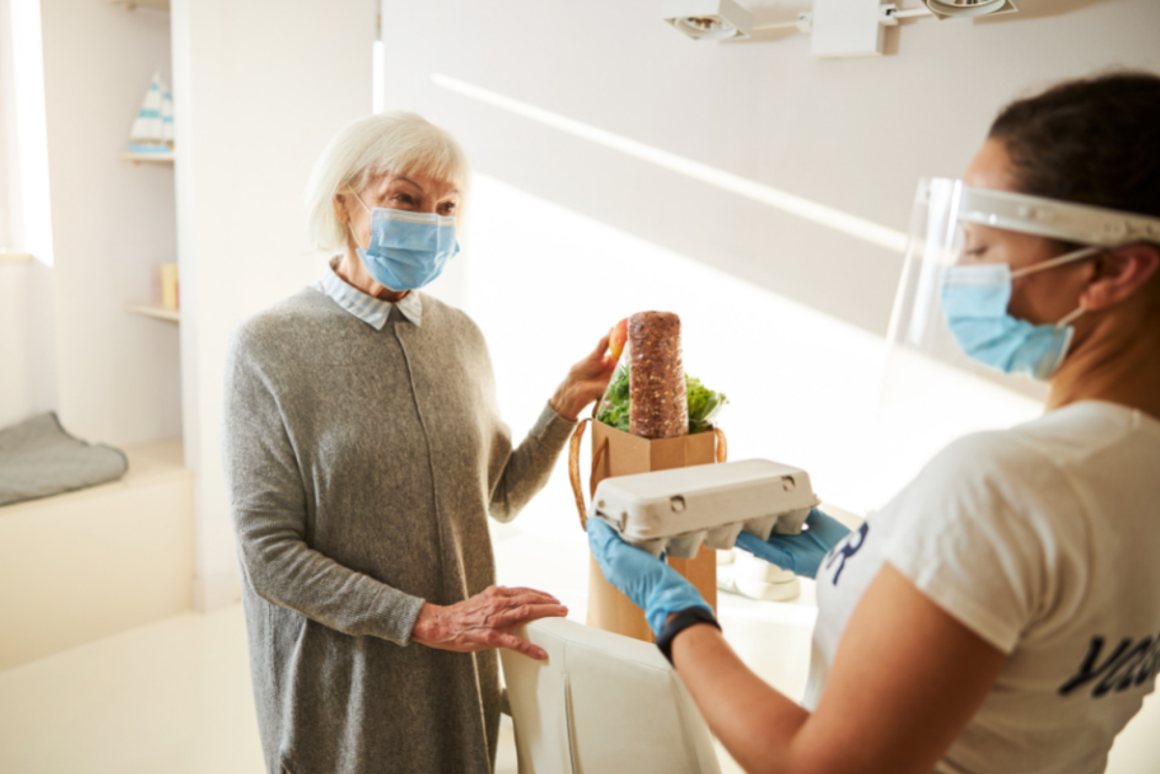In 2022 it looks like COVID is here to stay. The upside of this is that we now have a better understanding of COVID and can be better equipped to manage it. Nutrition plays a key role in our overall health, as well as our recovery from illness. The elderly, especially those in aged care are vulnerable to COVID. Therefore it is important to optimise their health and strength, whether it is before, during or after a COVID outbreak.
Before an outbreak
Identify high-risk residents
Not only does COVID increase the risk of malnutrition, but pre-existing malnutrition can increase the severity of COVID in an individual. This can include increased complications, longer recovery time, increased hospitalisation and increased risk of death. Screening residents beforehand can help you identify who is at risk of malnutrition. These include residents who have been losing weight unintentionally, residents who are eating poorly or have a reduced appetite and residents who are underweight. Once identified, general strategies (such as high protein milkshakes) can be implemented, or a referral can be made to the dietitian.
Check supplies
It may be worthwhile ordering nutrition supplements earlier than needed to allow for delivery delays. If you anticipate running out of supplements, ask your supplier or dietitian for a suitable alternative. Also, consider the stock levels in the kitchen. Foods such as full cream milk, milk powder, yoghurt and ice cream can come in handy when nutrition supplements run low.
During an outbreak
Prioritise protein and energy
Older people are at an increased risk of malnutrition, especially during an outbreak. Residents who have contracted COVID have increased nutrition requirements and may experience symptoms that impact their intake. These can include loss of appetite, changes in smell and taste, increased fatigue and shortness of breath. Those without COVID may also experience a decrease in appetite due to isolation and being unable to see family and participate in outings and activities. During an outbreak, meals are often served in the resident’s room rather than the dining area. This can mean that residents may require more encouragement than usual to finish their meals. Therefore, it is important to provide nutritious foods that are high in energy and protein to optimise intake. It is also important to consider that when a tray service is in place, dessert is often served at the same time as the main. Therefore foods such as ice cream may be melted by the time the resident is ready to eat it! Suitable high energy high protein foods may include mousse, pudding, yoghurt, custard, slices, cakes and cheese.
Encourage nourishing fluids
Water is great for hydration, but it can fill residents up and cause them to eat less at mealtimes. Unlike water, nourishing fluids provide both hydration and energy. This can help prevent unintentional weight loss. Nourishing fluids may include milk, Milo, juice, cordial, milky tea/coffee and even soft drink! It’s still important to prioritise intake at mealtimes, but nourishing fluids can help residents meet their energy requirements between meals.
Implement facility-wide strategies
While tailored nutrition interventions are the gold standard, staff shortages during an outbreak can make this challenging. For that reason, it can be useful to implement facility-wide strategies to prevent malnutrition and alleviate the workload of staff. These strategies may include fortifying foods such as porridge, soup and mashed potato with milk powder, having high energy high protein snacks available at all times or offering high protein milkshakes between meals. These small changes can make a significant difference to the health and nutrition of residents in aged care.
Utilise telehealth
One positive of COVID is that if it had to happen, at least it happened in the age of the internet! Your dietitian can provide ongoing support for your staff and residents even if your facility is in complete lockdown. Telehealth can be delivered via phone call, zoom or Microsoft teams from anywhere in Australia. Our telehealth services are held to the same high standard as our face to face services. So you can rest assured that whether your facility is in lockdown or not, there will be no compromise when it comes to the quality of dietetic services.
After an outbreak
Reweigh residents
It is very common for residents to lose weight after a lockdown (even a short one!). Weighing them early is a good way to quickly identify nutrition concerns and implement strategies. Prioritise reweighing high-risk residents (screened before the outbreak!) and those with suspected weight loss.
Refer dietitian
Understandably, referral numbers will be higher than usual after an outbreak. Your dietitian will be more than happy to accommodate your needs whether that is increased hours, additional visits or a weight review to identify the priority referrals.
If your home has recently experienced an outbreak, please contact Plena Healthcare Dietetics to talk through the best option for your home



